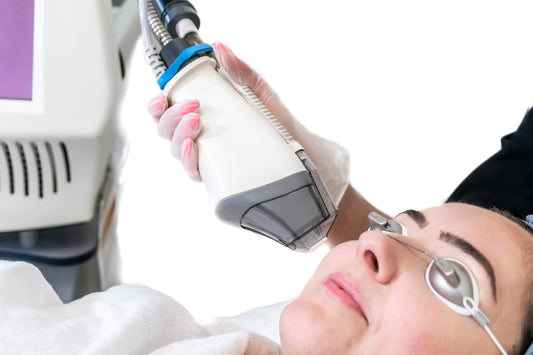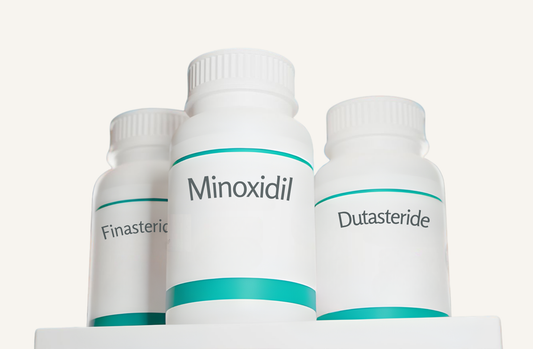We’re all familiar with the short-term effects of too much sun exposure, but we often underestimate the damage that UV rays can cause in the long run.
While a sunburn alone is undoubtedly an often painful nuisance, there’s so much more visible damage that chronic UV ray exposure can cause over a longer period of time. This affects the deepest layers of our skin, and gradually appears as we age. Using sunscreen and limiting sun exposure is always the best option, but there are solutions available that can help you improve the appearance of photodamaged skin. We’ll discuss what you need to know about sun damage, as well as how to treat photodamaged skin.
Meaning of Photodamaged Skin
Photodamage happens when unprotected skin is regularly exposed to ultraviolet (UV) light from the sun, or from other sources like tanning beds. UV rays affect the dermis, the middle layer of the skin. This layer contains collagen and elastin, which provide strength, structure, and elasticity to the skin. They also damage the DNA of skin cells. These cells produce melanin (which is responsible for skin pigmentation) in an attempt to stop any further damage.
Photodamage will look different from person to person. Over time, it may visibly present on the skin in the form of wrinkles, pigmentation, uneven texture, blotchiness, and a loss of elasticity.
Signs of photodamage most often appear on the face, but it can also manifest in other areas that are frequently exposed to the sun. This may include the chest, shoulders, hands, and/or back.
The visible signs of photodamage and chronological aging (which is influenced by genetics and your age) can be very similar. However, if you notice these effects on areas of the skin that are regularly exposed to the sun but not on areas that tend to be more covered (such as the upper legs or the abdomen), you’re likely dealing with photodamage.
How To Prevent Photodamage
One of your most powerful tools for protecting your skin is sunscreen (SPF 40 or higher), which you’ll want to wear daily and reapply regularly to best shield your complexion against the damaging effects of UVA and UVB rays. When possible, you’ll also want to limit direct sun exposure, and wear a hat, sunglasses, and/or UV protective clothing when outside.
Can I Reverse Sun Damage To My Skin?
While you can’t completely reverse photodamage, there are some things you can do to help minimize the visible effects.
There are a variety of different topical solutions you can use to help remove the appearance of sun damage, depending on how photodamage appears on your complexion. If you’re dealing with uneven pigmentation, a formula made with azelaic acid is an effective option.
Research has shown that, when used in higher concentrations, azelaic acid can help lighten the appearance of pigmentation for a more even complexion. This is due in part to its ability to block tyrosinase, an enzyme that plays a key role in the production of melanin. Its gentle exfoliating properties also help improve uneven skin tone. Bonus: azelaic acid has anti-inflammatory and antibacterial properties, and can be an excellent ingredient for acne and rosacea-prone skin.
Two other topical ingredients that have been proven to improve the appearance of photodamaged skin are retinoids and vitamin C. Vitamin C stimulates collagen production, which can help soften the appearance of lines and wrinkles caused by sun damage. It also has brightening effects that can help improve pigmentation. Since it’s an antioxidant, vitamin C also protects the skin against damaging free radicals. The Foundation Skincare Vitamin C Lotion is formulated with a potent concentration of vitamin C, as well as vitamin E for extra antioxidant power to help boost the results. It also comes in a lotion formulation that improves the skin’s hydration levels.
Retinoids are potent anti-aging ingredients that can similarly help minimize multiple symptoms of photodamage. They boost cell turnover, and are connected to the softening of fine lines and wrinkles, as well as the improvement of uneven skin tone and texture.
Of course, while working to minimize the visible damage that has already been done, you’ll want to continue to protect your skin against the sun to help prevent further damage.
Using Hyperpigmentation & Anti-Aging Products For Photodamage
If you want to target photodamage, you’ll want to reach for well-formulated products geared towards minimizing signs of aging and fading the appearance of hyperpigmentation. At Foundation Skincare, we have effective topical solutions and supplements made with clinically proven ingredients that can help reduce the visible effects the sun has on your skin and help you maintain the results you achieve.
The Foundation Skincare Azelaic Acid Cream is made with a 14% concentration of azelaic acid – the highest non-prescription percentage available on the market. This dermatologist formulated daily cream is created to help minimize the appearance of hyperpigmentation and signs of aging, including fine lines, wrinkles, and uneven texture. It’s also a suitable solution for those dealing with acne and/or rosacea.
For a well-rounded regime that helps target multiple signs of sun damage, pair this cream with the Foundation Skincare Vitamin C Lotion and the Foundation Skincare Night Renewal Cream. In the morning, apply our Vitamin C Lotion to clean skin, and then follow it up with our Azelaic Acid Cream. At the end of the day, apply our Night Renewal Cream to clean skin.
We recommend taking an internal approach to preventing and treating photodamage, as well. The Foundation Skincare Pigmentation Defense is formulated with a blend of vitamins, antioxidants, and herbs that may fade discoloration and also help maintain the results you achieve. This includes polypodium leucotomos extract, an antioxidant-rich extract that has been shown to be helpful in improving the appearance of melasma (discoloration that can be caused by sunlight). Additional ingredients include ginkgo biloba, vitamin C, vitamin E, and alpha lipoic acid – all of which possess antioxidant properties and can help defend against free radical damage.
As more of a preventative measure, we also suggest the Foundation Skincare Spectrum, which is crafted to help protect the skin against the range of damaging effects of the sun while supporting overall skin health. Like our Pigmentation Defense, it’s formulated with antioxidant-packed polypodium leucotomos. It also contains additional ingredients that can further help defend and renew the skin, including antioxidant-rich and anti-inflammatory milk thistle leaf, nicotinamide, and vitamin D.
While you may not be able to completely diminish visible signs of photodamage, a thoughtfully created routine can help improve the appearance of the complexion while defending the skin against further damage.




